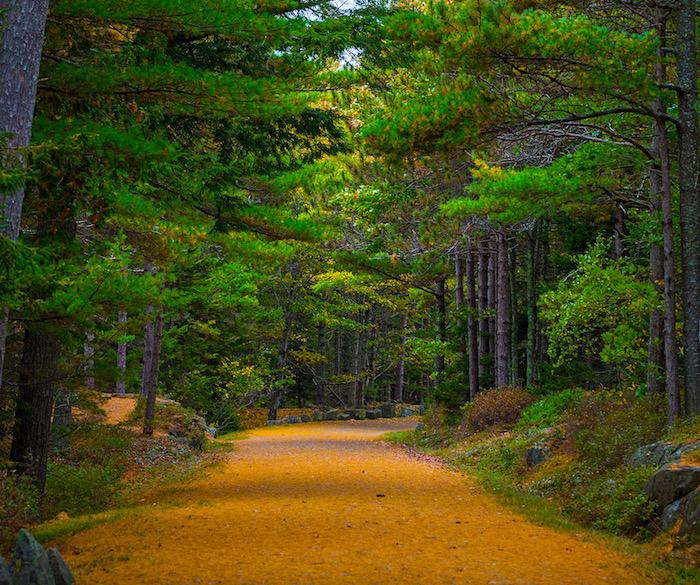
Should electric bikes and perhaps electric scooters be allowed on the carriage roads at Acadia National Park?/Rebecca Latson file
A story caught my eye the other day. It centered on electric bikes, and where they can roam in the National Park System. The story centered around Acadia National Park in Maine and raised the prospect that e-bikes might one day be allowed to travel the park's iconic carriage roads. Is that a good idea?
For now, the park is blocking the motorized bikes from heading down the carriage roads, which are restricting to muscle-powered cyclists, hikers, and equestrian travelers. But the AP story adds that "new rules are expected in the coming weeks."
“I’m hoping that they’re going to come to reality,” said one of the cyclists interviewed by the AP. “This will get more popular as time goes on.”
Well, there are a lot of popular things out there, but do they all deserve access in the parks? Remember Segways? What about those electric scooters that are all the rage in metropolitan areas? Will they be next to seek access to trails and areas normally off-limits to motorized vehicles?
In Canada, a pilot program is under way to test e-bikes on trails in Jasper National Park.
"There's a lot of places in the national park that are accessible by bike but maybe not to the entire general public due to limitations on fitness, etc.," Marc Vien, sales manager at Jasper Source for Sports, told CBC News. "But those e-bikes allow people to get to those places easily."
Tell us, travelers, how much access in the National Park System should electric bikes have?



Comments
I find it very interesting that the writer of this article has a podcast on this topic with two people that seem against e-bikes in the park and no representation from advocates for e-bikes who might elucidate the many benefits of e-bikes for the individual, environment and traffic congestion/pollution issues.
I also have a solution for resolving the perceived e-bike problem:
1. Treat e-bikes like regular bikes and post a speed limit of 12-14 mph for all. There are plenty of people using regular bikes that go too fast so this would be safer for all.
2. Start thinking positively about the health and environmental benefits of e-bikes. Like aging, they are the future.
For those who are concerned about some e-bikes (and regular bikes) having wide tires and the impact on trails, put your worries to rest.
Wider tires actually have less of an impact on dirt and gravel surfaces than skinnier tires because they displace less psi (pounds per square inch). The wider tires even help repair depressions and ruts in trails, caused by pedestrian traffic and skinnier tires, by smoothing them out.
As someone who has ridden bikes before, who the heck rides skinny tires on dirt or gravel? Maybe hybrids with in-between tires, but those are better on hard-packed dirt.
I've ridden on mountain bikes, and there's a reason why they call their tires "knobby". They're designed to grip with a tread pattern that digs into a dirt surface. That's what they do. And if you've got an e-Bike that weighs 50 lbs then that's extra weight on the tires.
Much of the advocacy for allowing motorized bikes on Acadia's carriage roads talks about the need for pedal assistance for getting up hills. As someone who is 77 years old, may I ask you to consider another approach. If you are riding your bike and encounter a hill that you are not able to overcome by pedaling, dismount and walk your bike up the hill. Problem solved.
As a 77 year old disabled vet, let me reply. Among other issues I suffer from a debilitating tendonitis (think permanent sprained ankle). As it happens, I can ride a bike but not walk very well. The bike is actually physical therapy. The suggestion that I push my bike up a hill is not particularly constructive and is made from ignorance. Most people commenting need to know more about ebikes. Frankly, as several have suggested, the reality (in the true meaning of that word) is that ebikes should be permitted everywhere regular bikes are permitted and everyone's behavior should be the monitored aspect.
Think of the e bike as an "equalizer" for most of us. At the age of 73 I just want to continue to bike where I used to be able to!
i have a pedal assist ebike. your description is of a moped type scooter. I am a senior citizen and cannot keep up with my husband on his regular bike. If you test rode a nice regular bike you would know they travel at much greater speeds than ebikes.